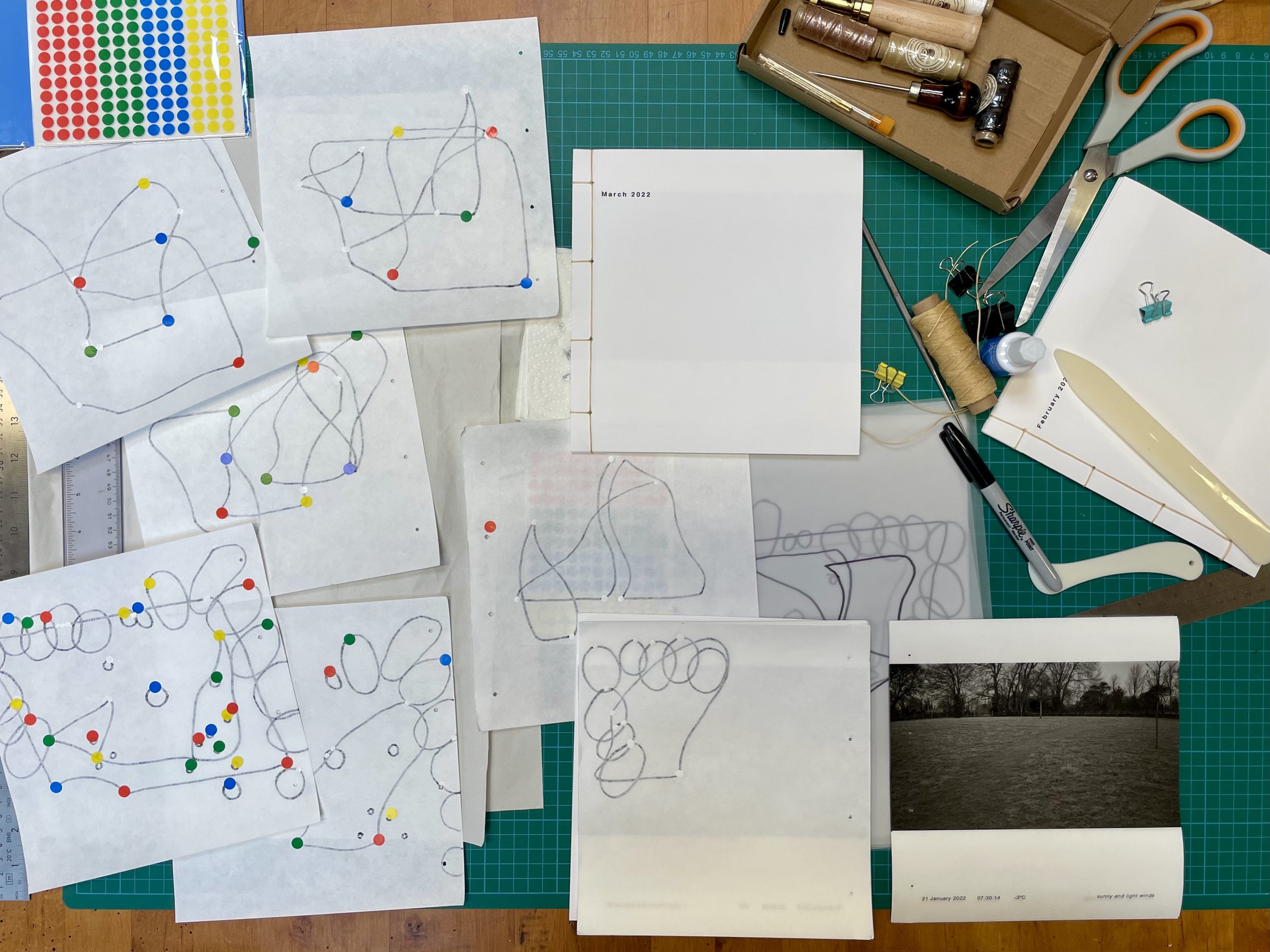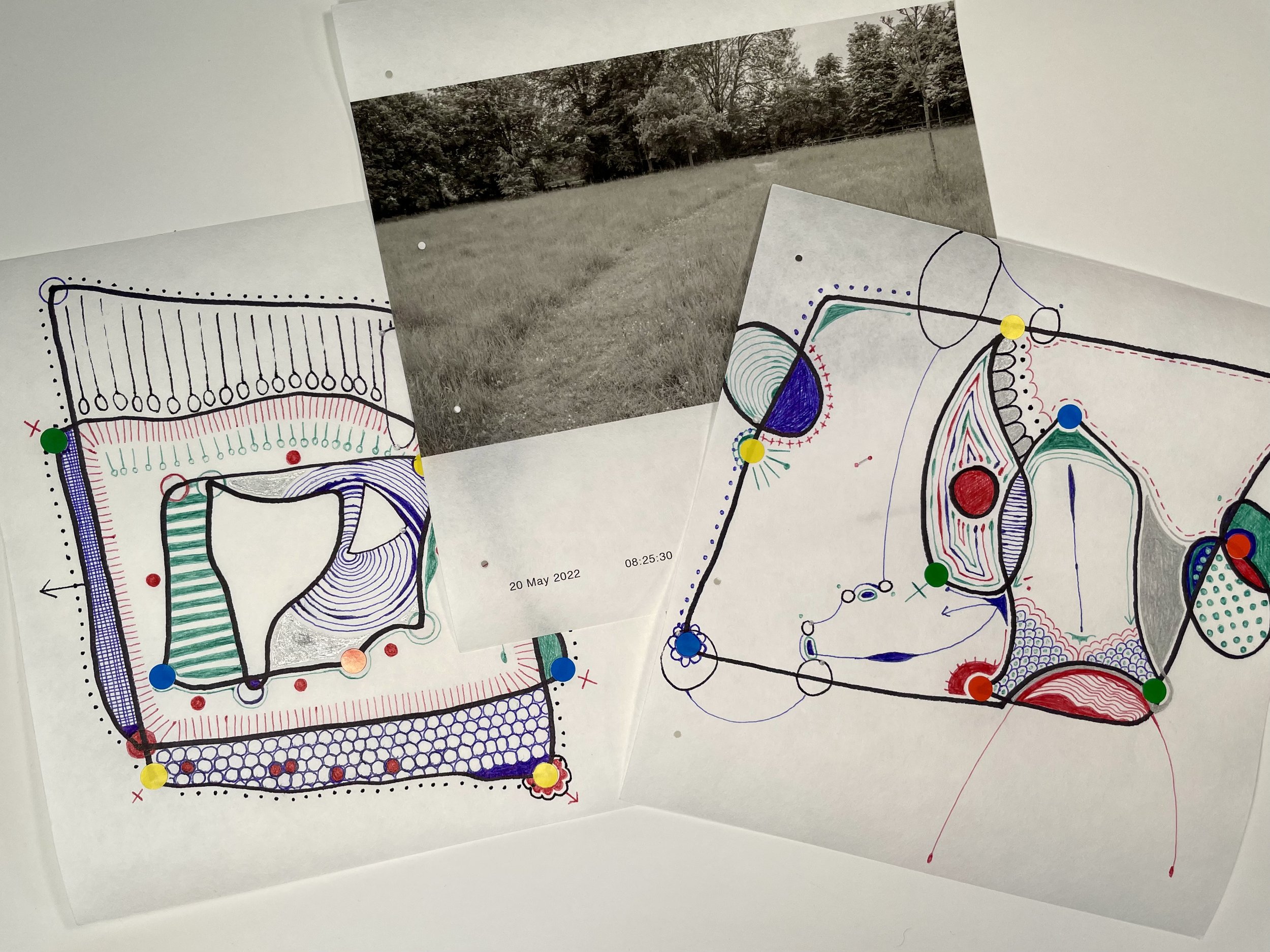WORK IN PROGRESS: An Area of Open Land
A Field Study (2022 ongoing) continues to explore the boundaries of the artist book and is dedicated to a page a day for the duration of 6 months, January - June 2022. In a recent blog, Leaving the Field Clear, I discussed anthropological differences between being a passive observer as opposed to a full, active participant in the agency of observation and data collection within the field. Tim Ingold suggested the act of being present could not help but involve the participant in the very situation being observed but to him this is something to be celebrated. ‘Rather than testing conjectures in arenas of practice’… he considers an active participatory role as ‘enrolling practical activity in the very process of following a train of thought’. It would seem, he recognises experimental activity as being truer to the ‘fundamental questions of life’. To do our thinking in the open has the potential to provide the tools to embody an immediate response to the field of study. It is likely the situation being observed will be affected but to Ingold, this conveys a more truthful means of gathering information with a closer connection to life that a purely objective observation could not obtain. (Ingold T. 2022, ‘Clearing the Ground’ In: Being Alive. pp. 19-22)
In the context of this inquiry, the practice begins to increase the active participatory role in A Field Study, introducing a subjective and bodily experience to the pages. Rather than preserving the impartial clinical observation, the weather recordings and blank pages, the work is accumulating a collection of drawings in the spaces where the blank pages materialise in the Artist Book.
Understanding each blank page as a field study, development in the work considers it not only as a space to observe and reflect but as a space to introduce the authentic bodily trace. Current development in A Field Study (2022 ongoing) takes the work from an established matrix of daily recordings to embody a broader context of subjective interpretation. Both methods observe the same field and utilise repeated formats and rhythm in order to gather understanding through uniformity to enable differences to emerge. Whereas one set of observations are gathered from behind the camera (a remote presence) with the addition of an impartial BBC weather report, the other, although initially acquired from a google earth recording of the field, is subjectively extracted, arranged and drawn into. The drawings celebrate a mind wandering method of mark making and an experimental quality of activity that has a direct connection to the language of the hand.
Eva Hesse’s Mechanical Drawings, appear to highlight the conflicting nature between the matrix as an externally established structure and the trace as a demonstration of the remains of a bodily function. Benjamin Buchloh describes ‘the opposition between drawing as desire for another corporeality and drawing as self-critical subjection to pre-existing formal or linguistic conventions’. He writes about ‘the order of the diagrammatic’ as a new typology of drawing, which emerges in the work of Marcel Duchamp’s, Network of Stoppages (1914). Introducing an anti-aesthetic approach, his diagrammatic technique would direct the characteristic’s of drawing for many artists, including Eva Hesse, throughout the mid 20th century.
Marcel Duchamp, Network of Stoppages, 1914, oil and pencil on canvas, 149.9 x 166.7 cm
Described by Buchloh as ‘alternating between the meticulous botanist and the mad engineer’ Hesse imbued her mechanical drawings with an ‘uncanny affinity for the inner, if not the private, parts of machines.’ In summary, it would seem, Buchloh suggests that Hesse not only embraced a technical and structured manner in her drawings but instilled a subjective and bodily function, which transport the drawings to a space where the machine meets the body in unison. (Buchloh B. 2006, ‘Hesse’s Endgame: Facing the Diagram’ In: De Zegher, C. Eva Hesse Drawing. pp. 117-152).
Eva Hesse, Untitled, 1965, drawing and gouache on paper, 496 x 646 mm
The field, an area of open land, in the context of this blog, signifies a clearing. Assuming a state of emptiness, it could be seen as a space waiting to be experienced. The perimeter and the contours of the surface are evident, but to fully understand the space, the observer is being asked to become a full, active participant. The new drawings continue to observe the field and are initially established in the mode of a passive observer. But as each one transcends into a burst of experienced colour implemented by a multi colour click pen and sticky dots, a new alphabet of marks emerge and the observation becomes alive and vibrant. The observer is more able to record and provide knowledge of the space, as the experience of it enables understanding. Placed among the pages of the black and white photographs and weather recordings, the drawings punctuate the timeline like an event or a happening. The observer is being observed and the Field Study becomes a circuitous work that rambles and meanders along the paths which pass through the space.





